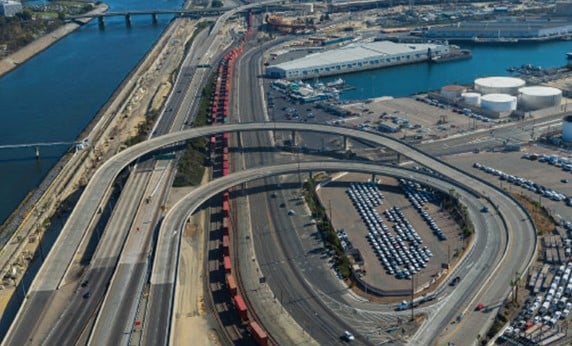
Draft Environmental Study released on rail facility
Planned project would shift more cargo to trains
The U.S. Maritime Administration has released a draft study on environmental impacts of the Pier B On-Dock Rail Support Facility, a Port of Long Beach project.
Port officials initiated the process for the report, a Draft Environmental Impact Study, to make the project eligible for federal grant funding. The Notice of Availability for the Draft EIS is available on the Federal Register and at www.polb.com/ceqa. The public has 45 days to submit comments on the Draft EIS before the close of the comment period on Monday, Aug. 24, at www.regulations.gov.
An online public meeting and teleconference will be held from 6-8 p.m. on Tuesday, July 28, preceded by a virtual open house from 4-6 p.m. Two weeks prior to the public meeting, a notice with details on how to access the online meeting and teleconference will be made available on the Federal Register at www.federalregister.gov.
Located southwest of Anaheim Street and the 710 Freeway, the Pier B On-Dock Rail Support Facility would shift more cargo to “on-dock rail,” which places containers directly on trains at marine terminals. Currently, the ability to build long trains is limited.
The Pier B facility would change this by providing track space to join together trains assembled at terminals. No cargo trucks would visit the facility. A 1-mile-long train can take as many as 2,000 trucks off the roadways. View a video about the project.
Phase 1 rail work is slated to begin at the start of 2022 and be completed in 2024, doubling the capacity of the existing Pier B rail yard. Street realignments and other component projects will continue to improve operations as they are finished. The project is scheduled for full completion in 2032.
The Port of Long Beach is one of the world’s premier seaports, a gateway for trans-Pacific trade and a trailblazer in goods movement and environmental stewardship. With 175 shipping lines connecting Long Beach to 217 seaports, the Port handles $170 billion in trade annually, supporting more than 575,000 Southern California jobs.









